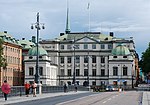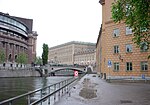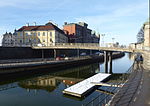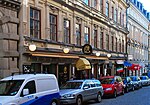Supreme Court of Sweden
1789 establishments in SwedenCourts and tribunals established in 1789Courts in SwedenNational supreme courts
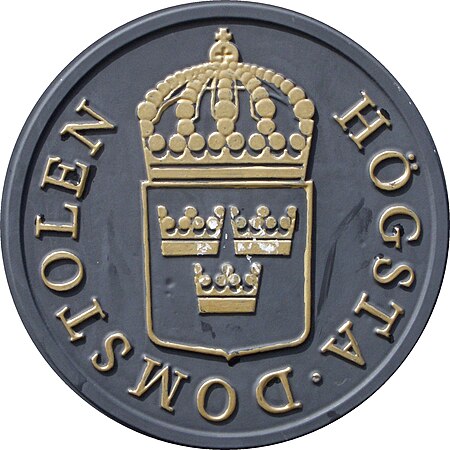
The Supreme Court of Sweden (Swedish: Högsta domstolen, abbreviated HD) is the supreme court and the third and final instance in all civil and criminal cases in Sweden. Before a case can be decided by the Supreme Court, leave to appeal must be obtained, and with few exceptions, leave to appeal can be granted only when the case is of interest as a precedent. The Supreme Court consists of 16 Justices (Swedish: justitieråd) who are appointed by the government, but the court as an institution is independent of the Riksdag, and the Government is not able to interfere with the decisions of the court.
Excerpt from the Wikipedia article Supreme Court of Sweden (License: CC BY-SA 3.0, Authors, Images).Supreme Court of Sweden
Rådhusgränd, Stockholm Gamla stan (Södermalms stadsdelsområde)
Geographical coordinates (GPS) Address Nearby Places Show on map
Geographical coordinates (GPS)
| Latitude | Longitude |
|---|---|
| N 59.326111111111 ° | E 18.066388888889 ° |
Address
Bondeska palatset
Rådhusgränd
111 28 Stockholm, Gamla stan (Södermalms stadsdelsområde)
Sweden
Open on Google Maps
